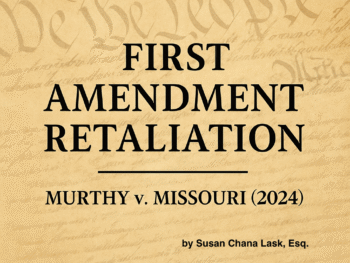For years clients have shown me bills from their former attorneys showing a lawyer billing scheme where they charge large hourlies of $900 or more and add to that “administrative fees” that has clients unwittingly pay tens of thousands of dollars more than they should to their monthly bills. I have seen these administrative fee percentages between 3 to 4 % added to bills for no reason.
Here’s how the Administrative Fee scheme works using a recent example of my client charged by a New York City divorce firm. Their retainer says they will charge a 3% administrative fee in addition to their hourly fees, which
“shall cover telephone, postage, facsimile, photocopying for copies made by the Law Firm in house, computerized legal research, local usage, local travel and parking charges (i.e. to meetings or court) and the client will not be billed separately for these costs.”
Let’s look at what that an administrative fee looks like on the monthly bill.

My client pays her lawyer $910 an hour for a divorce in this example. The above picture shows the lawyer charged $36,847.00 that month in hourly fees then multiplied that by a 3% “administrative fee” to add another $1,105.41 to the bill. Remember, as the retainer says, this administrative fee should cover expenses for copies, phone, travel, parking and whatever other elusive administrative thing you can think of, but it is all false. That month, like most other months, there were no parking charges, copies, travel and certainly no phone charges as that went out in the 1980s when phone companies actually charged for long distance calls. Now everyone has unlimited plans-and so do law firms.
Why would anyone hand over thousands of dollars a month for nothing? Because they don’t know their rights-but now they will.
Attorney ethics requires that any charge should be itemized because an attorney can only recoup actual costs, not fictional ones. ABA Comm. on Ethics and Prof’l Responsibility, Formal Op. 379 (1993). Hence, required bookkeeping under the Rules of Professional Conduct called RPC 1.15 (d)(2) mandates lawyers to keep accurate entries of all disbursements because only actual costs are allowed.
Cases recognize the perils of fictionalizing costs by holding that only “[r]easonable and identifiable out-of-pocket disbursements ordinarily charged to clients are recoverable.” LeBlanc-Sternberg v. Fletcher, 143 F.3d 748, 763 (2d Cir. 1998). The lawyer seeking to recover costs “bears the burden of adequately documenting and itemizing the costs requested.” Pennacchio v. Powers, No. 05-cv-985, 2011 U.S. Dist. LEXIS 79279, 2011 WL 2945825, at *2 (E.D.N.Y. July 21, 2011)). Kuzma v. Internal Revenue Serv., 821 F.2d 930, 933-34 (2d Cir. 1987) (“Identifiable, out-of-pocket disbursements for items such as photocopying, travel, and telephone costs are generally taxable under §1988 and are often distinguished from nonrecoverable routine office overhead, which must normally be absorbed within the attorney’s hourly rate.”).
So a client should only pay for costs actually incurred, not an administrative fee for something that never happened.
There are several problems with these administrative fees. First, they secretly have the client pay a higher hourly rate than agreed to by the lawyer calling it a disbursement that never happened. My client agreed to $910 an hour, not $910 plus 3%.
Second, the only one that benefits from this is the lawyer at many clients’ expense. For example, the lawyer has 20 clients billed every month, and averages $500 administrative fees among them. That is 20 clients x $500= $10,000 extra income a month, which is $120,000 a year concealed as a disbursement for things never paid for by the attorney. It’s free money to the lawyer and a big loss to the client who is just forking money over for nothing.
Third, the attorney usually charges administrative fees on top of these administrative fees anyhow. For example, in my client’s case, she was charged $90 by a $300 an hour paralegal to “fax”. Charging to fax also went out in the 1990’s, but it also is an administrative fee that is covered in the 3% charge. In reality, no one should charge $90 to fax anything and that is a secretarial expense that should be subsumed in the hourly fee anyhow.
I cannot imagine how lawyers even reconcile this “administrative fee” on their taxes as it is income they mischaracterize as a cost to the clients. Are these lawyers deducting the administrative fee as a cost on their taxes when no cost occurred or are they adding it as income, which I believe is the correct way to list this on their taxes.
It’s time to put a stop to administrative fees as lawyers owe clients a fiduciary duty to be honest. Honesty involves charging actual costs only.










 3 Steps to Protect Your Identity from the Dark Web
3 Steps to Protect Your Identity from the Dark Web